How to create a professional business and marketing plan to turn your idea into a reality?
 Following on from our last post about harnessing the power of a great idea, we wanted to take you through some of the key steps to creating a business and marketing plan which will be a crucial tool to developing your idea in the right way and also attracting that all important investment.
Following on from our last post about harnessing the power of a great idea, we wanted to take you through some of the key steps to creating a business and marketing plan which will be a crucial tool to developing your idea in the right way and also attracting that all important investment.
To start with you need to research into the state of the sector you are entering, getting as much information as you can from reports, statistics, surveys etc. You can find this information online via business organizations, entrepreneur forums, chambers of commerce, national and international business institutes, but the main thing is to only gather data from regulated sources in order to have the correct information.
Then dig deeper into the type of project you are developing, by looking at companies who are doing a similar thing to you. This will help you to understand your competition and to see what strategies other companies are using to promote and sell their products. They do not need to be direct competition, or in the same location as you, this is a way to learn from what others are doing. We also recommend that you attend as many events as you can related to your sector such as exhibitions, trade fairs, conferences and seminars, and follow all the leading entrepreneurs in your sector via social media – there’s so much they can teach you! Don’t be afraid to ask questions or find a mentor, so you can learn from their success and their mistakes.
The next step is to understand your consumer, their behaviour, characteristics, demographics and socio-economics through surveys and market research. You want to get inside your clients’ mind and understand the opinions that they can have of your product or service, their knowledge of the type of thing you’re doing and their interest level, whether they have an intention to buy and how they would consume this product – where would they buy it, how often would they buy it and what’s their motivation for purchase. There are many techniques for gaining this information, such as focus groups and questionnaires, so you need to look into the best way to get the most reliable information and answer your questions.
Once you understand your consumers you need to dig deeper into your competition and do a competitor analysis (read our previous blog article for techniques). I am always surprised by how few companies on the Costa del Sol have done one of these and have a thorough understanding of their competition; many people don’t even think they have any!! By writing a list of your competitors – the type of companies first and then specific names of the companies in question and then studying what they are doing, how much they are charging, how they are promoting themselves and gauging their success it will give you the best opportunity to prepare yourself and develop strategies to be competitive and give yourself the best chance of success.
Once you have completed your competition analysis you need to think about your location, where you need to be based, if you need a physical premises or if you could be online only. If you do need a physical office/shop, then you need to be very strategic in terms of the location, thinking about footfall, parking, accessibility and rental rates to choose the best combination of attributes. You need to think about where your competition are based as well and also what your techniques will be for attracting people to your shop or office.
Prepare a marketing plan which looks at the benefits and weaknesses of the product for consumers via a SWOT analysis, defines your unique selling points, identifies your key promotional mediums, sets a budget and creates a timed plan for launching your product and how you will get customers. This is an essential part of your business plan and we’ve got a great marketing planning article here which explains all the steps to take.
After you’ve finished these steps, then you need to do an investment proposal, which presents your idea in a logical and attractive way. One of the key elements here are the figures, how much will it cost, what is your predicted return and how quickly will you start to make money? Investors need your idea to be attractive, profitable and productive, don’t hide away figures, or add something untrue! However, you must also think of it as a marketing material, as it is selling your concept, so make it look good and professional, as well as simply presenting the numbers.
All of these steps can also be applied to an existing business to guide your development and make you more successful – it’s never too late to plan and improve!
In our next blog post we will be looking at the organizations there to help you to turn your idea into a profitable company, you can also buy an informative 45 minute marketing planning webinar here to help you further develop this important step for just 9.99€. See you next week!


